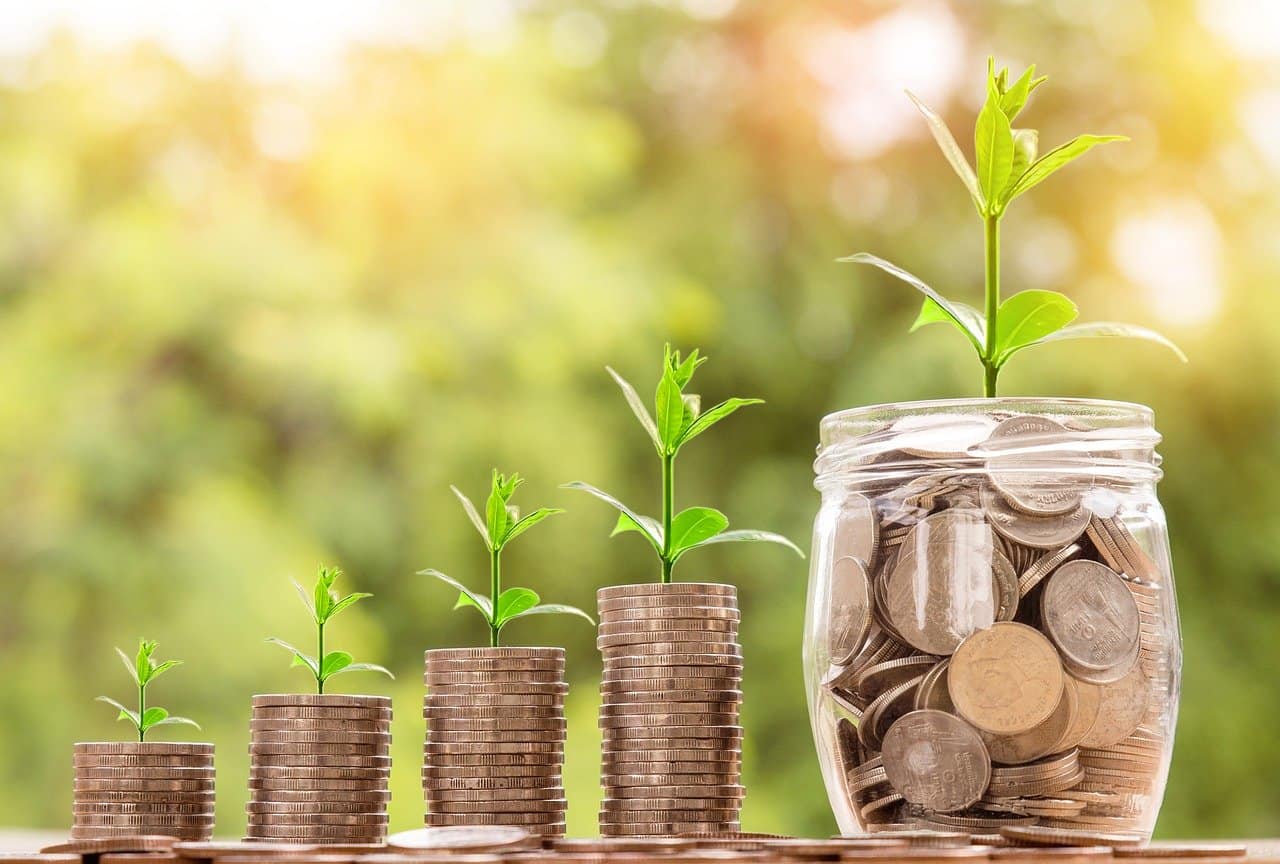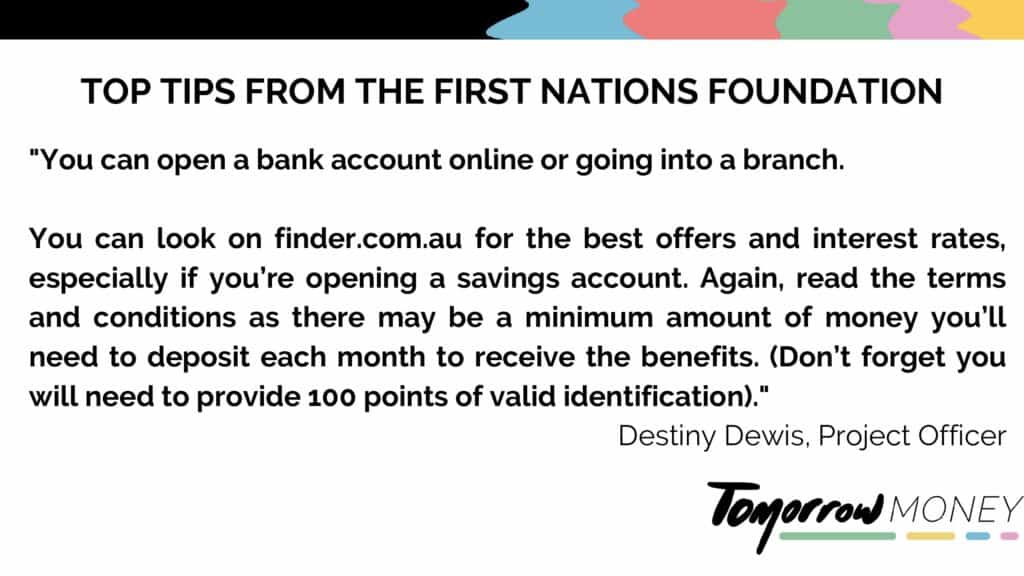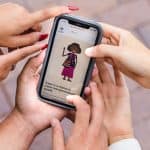How to open a bank account
First Nations Foundation
- Money Lessons, Womens

People open bank accounts for lots of reasons. Some of the more common ones include:
– Storing money from a new job
– Saving for something
– Keeping money in a safe place
– Being able to make purchases on a card, instead of by cash.
The process of opening up an account usually doesn’t take too long (about 10 minutes), but there are a few things to think about and to have handy.
1. Choosing a bank / credit union
A bank or credit union is the place that will hold onto your money until you choose to spend some of it.
You will often be given a card with a unique PIN number that will allow you to take money out if you need it, either through a branch or an ATM.
When choosing a bank or credit union, it’s important to check the fees.
Sometimes fees are charged on a monthly or yearly basis and sometimes they are charged for taking money out of ATMs or for spending more than what is held in the account.
Some accounts don’t charge any monthly fees, while banks don’t charge fees for students or people under a certain age.
Fee-free options can be a good starting point.
2. Filling in the application
To open a bank account, you need to fill in an application. This lets the bank know some basic details about you, such as where they can send statements or information about what you have spent and how much you have in your account.
There are two ways this can happen.
1. You can go to a branch of your chosen bank with some identity documents. It may be worth calling first to see what identity documents you need. Generally you need two to three types of ID to prove you are you. Examples of these can include: a Birth Certificate and a Current Driver’s Licence OR a Passport and a Letter from your Employer.
2. You can go to the bank or credit union’s website and click the ‘apply’ or ‘apply now’ button on the ‘transaction accounts’ page.
If you apply online, you will be guided through some questions about where you live, your email address and phone number.
You will still need to go to a branch to finish the process by proving your identity. The bank should tell you which documents you need (this is where you need your Birth Certificate, Medicare card, Driver’s Licence and/or Passport). If you have a job and a Tax File Number, you may need to tell that to the bank too.
3. Using bank services
Once you have been approved, your bank card will usually arrive within a couple of weeks.
There may be some information about setting up your personal PIN number. This is a private number that you need to use to access your money.
Using an ATM
An ATM (Automatic Teller Machine) can be used to access money from your bank account when you need it.
While different ATMs may have slightly different steps, the process is usually like this.
1. Insert your bank account card into the slot on one side of the machine.
2. The screen will tell you to enter your PIN number (this is your private four digit number).
3. You will be asked to choose an account. If you opened a savings account, hit ‘savings’ on the screen.
4. You have a choice to take out money (withdraw) or check how much money you have in the account (check balance or balance inquiry). Click on your option.
5. You will often be asked to confirm your choice and whether you would like a receipt.
6. Your card will be given back to you. Don’t forget to take it.
7. If you are taking out money, it should come out of the shoot below the screen. Sometimes this takes a few seconds.
Putting money into the bank account
When you want to put money into your account, you can do this by following the prompts on the ATM, by going into a branch or by giving your account details to your employer or the person wanting to put money into your account.
Important: Don’t give out credit card information, only transaction or savings account information. This should include a BSB (which is the bank’s six digit number to identify itself) and an account number of between 7 and 10 numbers. This article is not personal financial advice.
Read more: How to choose between a digital or traditional bank
Let us know if you liked this article
Let us know if you liked this article





